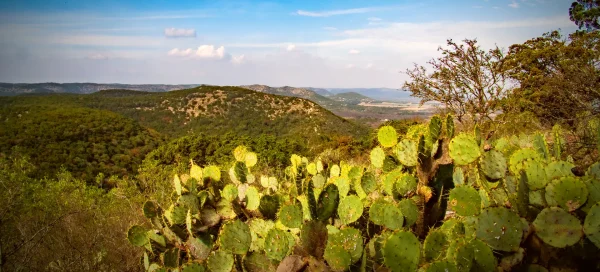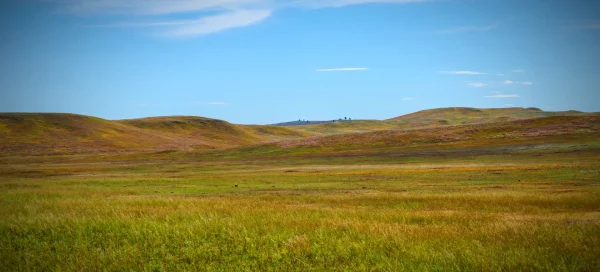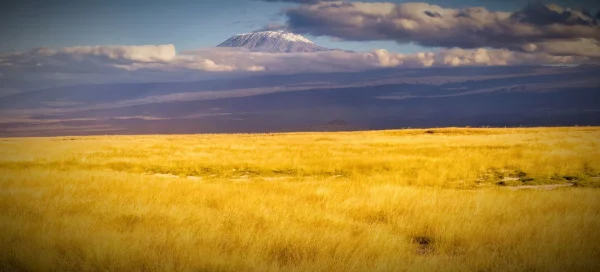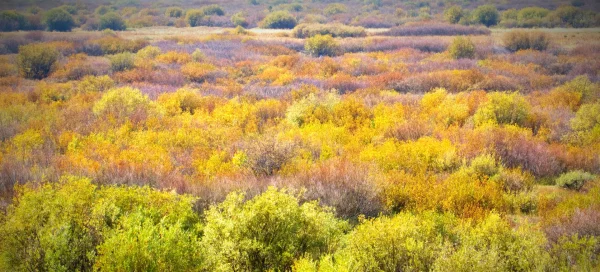Overview
The Field Sparrow (Spizella pusilla) is a small songbird of the New World sparrow family, Passerellidae, recognized by its warm, rufous cap and distinctive pink bill, making it a beloved sight in open grassy habitats across eastern North America. These birds exhibit a subtle beauty, with their upperparts showcasing a mix of brown and gray and their underparts a soft, clean white, often with a hint of buff on the breast. The Field Sparrow’s clear, melodious song, accelerating towards the end, is a defining sound of rural and open country during the breeding season. They are small and delicate, with a round head and a relatively long tail, embodying the quintessential sparrow appearance but distinguished by their more muted and earthy color palette.
Field Sparrows inhabit various open and semi-open areas, including old fields, grasslands, and the edges of woodlands. They strongly prefer areas with scattered bushes and trees, which provide essential cover and nesting sites, as well as perches for singing. These sparrows are ground feeders, primarily consuming seeds, but they will also eat insects, particularly during the breeding season when the nutritional needs are higher. The presence of Field Sparrows is often an indicator of the health of open habitat ecosystems, and their populations reflect changes in land use and habitat availability.
Despite their wide range, Field Sparrows have experienced declines in some areas due to habitat loss and fragmentation. These birds rely on early successional habitats and are becoming increasingly rare due to agricultural intensification and the development of previously undeveloped land. Conservation efforts focusing on preserving and restoring grassland habitats are crucial for maintaining healthy populations of Field Sparrows and the myriad of other species that depend on these environments.
Taxonomy
Kingdom
Phylum
Class
Order
Family
Genus
Species
Type
Physical Description:
Field Sparrows are small birds, measuring about 4.7 to 5.9 inches in length, with a wingspan that ranges from 7.1 to 7.9 inches. Their size and shape are typical of sparrows, featuring a plump body, a round head, and a long, notched tail. One of the most distinctive features of the Field Sparrow is its pink bill, which contrasts with its otherwise subdued plumage. The upperparts are a mix of brown and gray, while the underparts are predominantly white, with some individuals showing a light buff wash on the breast.
The face of the Field Sparrow is marked by a thin white eye-ring and a faint, whitish eyestripe, which adds to their gentle appearance. Their legs and feet are a pale pinkish color, blending with the overall soft color scheme of the bird. Males and females are similar in appearance, making sex differentiation in the field challenging. Juveniles display a streakier plumage than adults, which they lose as they mature into their subtler adult coloration.

Lifespan: Wild: ~3 Years || Captivity: ~10 Years

Weight: Male & Female: 0.4-0.6 ounces (11-17 g)

Length: Male & Female: 4.7-5.9 inches (12-15 cm)

Wingspan: Male & Female: 7.1-7.9 inches (18-20 cm)

Top Speed: 28 mph (45 km/h)
Characteristic:
Native Habitat:
Field Sparrows are native to North America, thriving in open and semi-open habitats across the eastern United States, from the Great Plains eastward to the Atlantic coast, and from southern Canada to northern Mexico. They strongly prefer old fields, grassy meadows, and the edges of woodlands, particularly areas that offer a mix of grasses, scattered bushes, and trees for nesting and perching. These habitats provide the essential combination of food, cover, and nesting sites that Field Sparrows need to thrive.
The birds are somewhat migratory, with northern populations moving southward in the winter to find more abundant food sources and milder climates. However, some populations in the southern parts of their range are resident year-round. The availability of suitable habitat is a critical factor in the distribution and abundance of Field Sparrows, with land use significantly impacting their populations.
Climate Zones:
Biogeographical Realms:
Continents:
Countries:
Diet:
Diet & Feeding Habits:
Field Sparrows primarily feed on the ground, foraging for seeds from grasses and weeds, which constitute the bulk of their diet, especially during the non-breeding season. During the breeding season, they incorporate many insects into their diet, including beetles, caterpillars, and ants, providing essential protein for growing chicks. This dietary flexibility allows Field Sparrows to take advantage of the seasonal availability of different food sources.
Foraging alone or in pairs during the breeding season and in larger flocks during the winter, Field Sparrows use a scratch-and-peck method to uncover food. They also visit backyard feeders, especially those near the ground, offering small seeds like millet. The presence of Field Sparrows in agricultural fields and gardens underscores their role in controlling insect populations and their adaptation to human-altered landscapes.
Mating Behavior:
Mating Description:
Field Sparrows are monogamous, with pairs forming during the breeding season. Males establish territories through singing and displaying flights, attracting females with melodious songs. The breeding season begins in early spring and can extend into late summer, with some pairs raising multiple broods. Nest building is primarily the female’s responsibility, with nests placed on or near the ground, hidden in dense grass or under shrubs for protection.
The female lays 2 to 5 eggs per clutch, which she incubates for about 12 to 14 days. The chicks are altricial, born blind and featherless, and rely on both parents for feeding and protection. They fledge approximately 7 to 12 days after hatching but remain dependent on their parents for several more weeks. The breeding success of Field Sparrows is closely linked to the quality of their habitat, with dense vegetation providing essential cover from predators.
Reproduction Season:
Birth Type:
Pregnancy Duration:
Female Name:
Male Name:
Baby Name:
Social Structure Description:
Field Sparrows exhibit a social structure characterized by territorial behavior during the breeding season, with males defending their territories against other males. Outside of the breeding season, Field Sparrows can form loose flocks, often mixing with other sparrow species, to forage in fields and grasslands. This flocking behavior provides safety in numbers from predators and increases foraging efficiency.
During the winter months, Field Sparrows’ social interactions are generally more cooperative, with less emphasis on territory and more on communal living. This seasonal variation in social structure allows Field Sparrows to adapt to the challenges and opportunities their environment presents throughout the year.
Groups:
Conservation Status:
Population Trend:
Field Sparrow populations have experienced declines in certain regions, primarily due to habitat loss and the alteration of landscapes that historically provided the open, grassy habitats these birds require. Agricultural intensification, urban development, and the succession of open fields to forests have reduced the availability of suitable nesting and foraging areas. Despite these challenges, Field Sparrows remain relatively widespread and adaptable, finding refuge in protected grasslands, conservation areas, and some managed agricultural landscapes.
Conservation efforts focused on preserving and restoring grassland habitats are key to reversing the decline in Field Sparrow populations. Practices that maintain early successional habitats, such as prescribed burns, selective logging, and setting aside agricultural fields, can provide the conditions for Field Sparrows and many other grassland species to thrive.
Population Threats:
The primary threats to Field Sparrow populations include habitat loss, degradation, and fragmentation. The conversion of open fields and grasslands to agriculture, urban development, and forest through natural succession reduces the availability of suitable habitats. Pesticide use in agricultural areas can also impact Field Sparrows by reducing the availability of insects, an important food source during the breeding season.
Climate change presents an additional challenge, potentially altering the distribution and quality of their habitats. Extreme weather events, changes in vegetation growth patterns, and shifts in insect populations due to changing temperatures can all impact Field Sparrow populations.
Conservation Efforts:
Conservation strategies for Field Sparrows focus on preserving and restoring their natural habitats. Efforts include managing and creating early successional habitats through controlled burns, mowing, and the cessation of agricultural land use in certain areas to allow fields to revert to natural grasslands. Conservation programs also aim to educate landowners and policymakers about the importance of these habitats for Field Sparrows and for a wide range of grassland species.
Participation in bird monitoring programs, such as the North American Breeding Bird Survey, helps track population trends and the effectiveness of conservation measures. These efforts are crucial for the long-term survival of Field Sparrows and the preservation of the open, grassy habitats they depend on.
Additional Resources:
Fun Facts
- Field Sparrows have a distinctive song that sounds like a bouncing ball slowing down, often used to identify them by ear.
- They can re-nest multiple times during breeding if earlier nests are lost to predation or other factors.
- Field Sparrows use dust baths as part of their grooming behavior to maintain their plumage.
- Unlike many other bird species, Field Sparrows often forage and feed on the ground rather than in trees or bushes.
- The Field Sparrow’s pink bill is a key identifying feature, distinguishing it from other sparrow species with similar plumage.
- Small birds have relatively long lifespans, with some living up to 10 years in the wild.
- Field Sparrows are important for ecosystem health, helping to control insect populations and disperse seeds through their diet.
- The species shows a remarkable ability to adapt to winter conditions, with northern populations migrating southward to find food and warmer climates.
- Field Sparrows can be attracted to backyard feeders with the right setup, including ground feeders and native plantings that provide seeds.
- Conservation efforts for Field Sparrows also benefit a wide range of other species that share their grassland habitats, highlighting the interconnectedness of ecosystem health.















